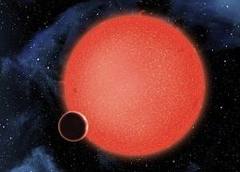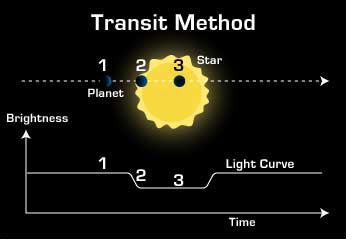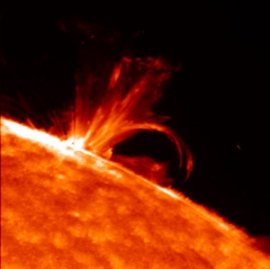Exoplanets – The hunt for another Earth

Is our earth unique? Or are there others – perhaps many others – out there? Is there extraterrestrial intelligent life out there?
It was as recently as in 1995 when there was the first evidence of planets in other solar systems. These planets are called exoplanets. In the meantime astronomers have detected thousands of exoplanets.
Planets easiest to detect are massive planets located close to their stars. These so called “hot Jupiters” dominate the list of known exoplanets. But meanwhile astonomers have discovered many Neptune-type planets and even super-Earths, in orbits farther and farther from their suns.
NASA announced just recently in the Kepler mission the discovery of 461 new planet candidates[1].
NASA´s Kepler mission is a project aimed at the search for habitable, terrestrial planets. It is the first mission capable of potentially finding Earth-sized and smaller planets orbiting stars in our region of the galaxy.

To find the planet candidates, the Kepler mission uses a technique called the transit method[2], by repeatedly measuring variations of the brightness of stars with the Kepler space telescope. When a planet passes in front or ‘transits’ its host star, the star’s visual brightness dims. Obviously, bigger exoplanets and the more frequently orbiting exoplanets are easier to find.
Four of the potential new planets are less than twice the size of Earth and orbit in their sun’s habitable zone, the region in the planetary system where liquid water might exist on the surface of a planet.
The Kepler mission measures more than 150,000 stars in search of planets that pass in front of, or “transit,” their host star. At least three transits are required to verify a signal as a potential planet.
The Kepler catalog now totals 2,740 potential planets orbiting 2,036 stars.
The most dramatic increases in 2012 have been the discovery of many new Earth-size and super Earth-size candidatesi, a steady increase in the number of smaller-size planet candidates and the number of stars with more than one candidate.
One exoplanet in particular, KOI-172.02[3], is described as the most similar to our home planet yet. KOI-172.02 is a super Earth-size planet candidate, meaning it is 1.25-2 times the size of Earth. KOI-172.02 orbits a sun-like star, named KOI 172, a star similar to our sun[4], [5]. This star system is 1040 light years distant from us, and the candidate exoplanet KOI-172.02 in an orbit of 150 days or less in the habitable zone. More details are yet to be released.
European astronomers have even made the first planetary discovery in the closest-to-Earth Alpha Centauri star system[6].
The complete list of Kepler planet candidates is available in an interactive table at the NASA Exoplanet Archive, and more valuable sources are The Extrasolar Planets Encyclopaedia and the Exoplanet Data Explorer [7].
Meanwhile, the hunt for another Earth is going on.
It is no longer a question of will we find a true Earth analogue, but a question of when. (Steve Howell, Kepler mission project scientist[8])
[2] If a planet passes directly between a star and an observer’s line of sight, it blocks out a tiny portion of the star’s light, thus reducing its apparent brightness. Sensitive instruments can detect this periodic dip in brightness, more
[3] KOI-172.02 is a candidate exoplanet discovered by astronomers affiliated with the Kepler Mission space observatory and first announced on January 7, 2013
[4] K00172.2 seems to be the second planet of the star KOI-172 (aka, KIC 8692861 and 2MASS J19330262+4452080) source1, source2, source3
[7]NASA exoplanet archive, The Extrasolar Planets Encyclopaedia , Exoplanet Data Explorer

